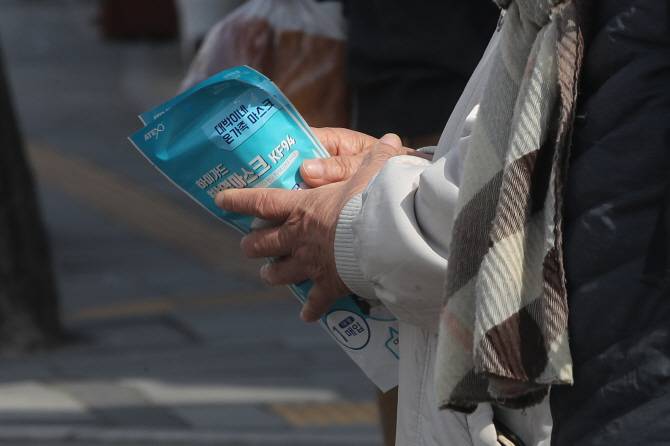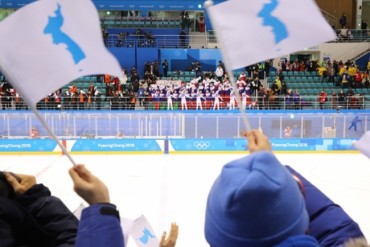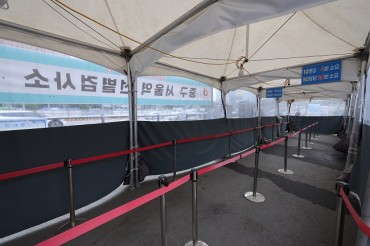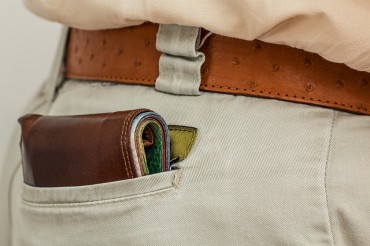
This photo, taken on March 21, 2020, shows a person holding masks purchased at a pharmacy in the Seoul ward of Jongno. (Yonhap)
SEOUL, April 1 (Korea Bizwire) — While unexpected cluster infections and coronavirus blues continue to dispirit people here, there’s at least one thing they no longer have to fret about: buying face masks.
Nearly a month into the government’s mask rationing system, supply has loosened up in many neighborhoods across the capital, sparing people from the exhausting searching and hourslong queuing for face masks.
In early March, the government launched a rationing system, aiming to disperse purchasing throughout the week, as COVID-19, which has infected more than 9,000 in the country, triggered a mask supply crunch.
Under the scheme, people can buy two masks for 3,000 won (US$2.50) each week on a designated day of the week, depending on the last digit of their birth year.
For instance, people born in 1981 and 1986 can buy masks on Monday, while those born in 1982 and 1987 can buy them on Tuesday. Those who didn’t purchase masks on weekdays can get them on weekends.
Initial confusion was reported when the system kicked off. Some queued on the wrong day of the week, while some asked if they could buy masks on behalf of their spouses or children. Both are not allowed under the rationing system.
Some people gave up buying masks as daily stocks — around 100 per pharmacy — sold out within minutes. Frustrated customers complained to pharmacists, which devolved into verbal and physical abuse in some cases.
But both customers and pharmacists say the system has pretty much stabilized after three weeks of trial and error.
“In the beginning, people stood in long lines and ranted at us when stocks sold out. Seeing people queuing at pharmacies was itself something I had never experienced in my 44-year career,” said an elderly pharmacist in Wangsimni, an eastern Seoul neighborhood known as a transportation hub and student hangout.
“Now we have around 400 masks coming in each day. People can get masks without standing in lines and we don’t get as many phone calls from customers. It’s so much better now,” the pharmacist said.
A pharmacist working at a big pharmacy on the ground floor of a hospital echoed the sentiment.
“Apart from the additional task of wrapping the bulk supply of masks into packages of two, things are not that different from before the mask supply crunch. We all got used to it,” said the pharmacist in the eastern Seoul ward of Dongdaemun.
“If this keeps up, I think we may end up with a few hundred masks in stock,” she said.

A notice on the government’s mask rationing system is on display at a pharmacy in central Seoul in this photo taken on March 19, 2020. (Yonhap)
Data show that the supply of masks has increased.
The government supplied around 7 million masks on March 9, the first day of the rationing system, but the figure reached over 12 million on April 1, according to the Ministry of Food and Drug Safety.
In addition to increased supply, a rise in remote working and voluntary movements encouraging people not to buy unnecessary masks, also appear to have helped stabilize supply.
“I didn’t buy a single mask after the virus broke out,” 35-year-old Yoon Binna said. “I’ve been working from home and felt that for young people like me, cotton masks are sufficient for short visits outside.”
For those who’ve been eagerly searching for masks, the recent trend is a source of comfort.
“Before the rationing system began, I couldn’t get even one mask despite visiting several pharmacies near my office. It was frustrating,” Lee Chong-seok, who works at the financial district of Yeouido, said.
“Now, I just have to queue for 15 minutes. If I’m lucky, I can get them without waiting. It’s relieving to know that I can always get a regular supply of masks,” the 65-year-old said.
Face mask supply is expected to further stabilize this month on increased supply of mask filters, a key component for face masks.
“The inconveniences seen in the initial stages of the rationing system have eased somewhat thanks to the people’s participation,” Prime Minister Chung Sye-kyoon said Monday.
“We will consider improving the mask rationing system when mask production capacity stabilizes.”
(Yonhap)






